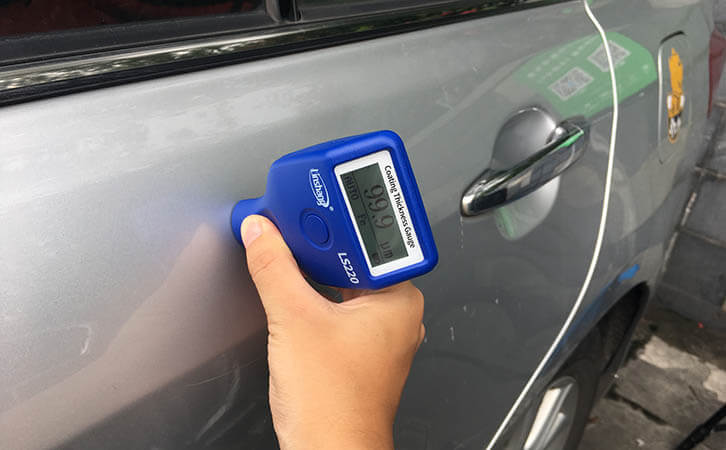High Precision Dry Mil Paint Thickness Gauge
High-precision dry mil paint thickness gauges are used more and more in the automotive industry, gas pipelines, communication cabinets, outdoor fences, etc. The measurement accuracy of different brands of dry mil paint thickness gauges is also very different. Of course, the measurement principle also determines the measurement accuracy of the dry mil paint thickness gauge.The measurement principle of high-precision dry mil paint thickness gauge is mainly divided into the following categories: ultrasonic method thickness measurement method, magnetic thickness measurement method, eddy current thickness measurement method, radiation thickness measurement method and electrolytic thickness measurement method.
What are the factors that affect the measurement accuracy of the dry mil paint thickness gauge?
1.Influenced by the measurement principle, the eddy current thickness measurement method is sensitive to the contact on the substrate surface, so the cleanliness of the tested object directly affects the measurement data accuracy of the dry mil paint thickness gauge.
2.Since the electrical conductivity of the base metal is related to the heat treatment method of the material surface, it has a certain influence on the electrical conductivity, thereby affecting the measurement accuracy.
3.High-precision dry mil paint thickness gauges usually use a variety of measurement principles such as eddy current and magnetic induction principles. The dual-principle high-precision dry mil paint thickness gauge is generally more widely used.
4.The curvature of the pattern will have an influence on the measurement accuracy and the influence will increase as the curvature decreases.
5.Materials used in the instrument, especially the probe will have a great impact on the test data.
So what are the characteristics of high-precision dry mil paint thickness gauges?
1.Temperature compensation function.
Simply speaking, it is the relationship between the positive temperature coefficient and the negative temperature coefficient. Taking the resistance as an example, the positive temperature coefficient will increase with the temperature increase and the negative temperature coefficient will be opposite.
2.Digital probe
It is used to make the measurement data more stable.
3.Test environment.
To avoid measuring the coating thickness in the environment of multiple electrical equipment. Because a variety of different magnetic fields can interfere with the thickness of the magnetic method.
4.The thickness of the base metal.
Most instruments have a critical value for the base metal, but for high-precision dry mil paint thickness gauges, the measurement accuracy is not affected by the thickness of the base metal.
5.High-precision dry mil paint thickness gauges are not affected by the “edge effect”.
Simply put, the sensitivity of the dry mil paint thickness gauge instantly changes the surface shape of the object under test, so when we want a precise data, it is generally not close to the edge or corner of the sample.
The Linshang LS220 is a high precision dry mil paint thickness gauge. The measuring principle of the instrument adopts magnetic method + eddy current method as well as digital probe and temperature compensation function. It meets the following 4 national regulations.
1.Determination of film thickness of paints and varnishes according to DIN EN ISO 2808
2."JJG-818-2005 Magnetic and Eddy Current Cover Thickness Measuring Instrument Verification Regulations"
3."GB/T 4956-2003 Measurement of non-magnetic coating thickness on magnetic substrate"
4."GB/T 4957-2003 Non-conductive coating thickness measurement on non-magnetic base metal"
If you want to know more, please contact our senior engineer!
- High precision coating thickness gauge for used car
- Automotive paint protection films coating thickness gauge
- Plating Thickness Measuring Instrument for Detecting Anti-corrosion Coating
- Linshang LS220, LS191, LS160A– Necessary for Car Cover Inspection
- Coating Thickness Gauge for Second Hand Vehicle
- Zero Adjustment Step of Coating Thickness Gauge
